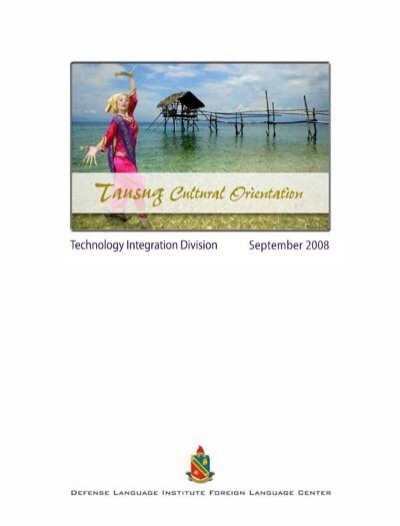The Best Strategy To Use For Tausug Philippines
Table of ContentsAll about Tausug PhilippinesIndicators on Tausug Philippines You Should KnowLittle Known Facts About Tausug Philippines.The smart Trick of Tausug Philippines That Nobody is DiscussingExamine This Report on Tausug PhilippinesWhat Does Tausug Philippines Do?
Anne's assumptions of the Pangalay show how, in a place where a number of cultures exist side-by-side, regard for tribal ownership of a dance is not inappropriate with a gratitude for and also also a feeling of pride in the collective corpus of dances as one tradition, on a nationwide degree. Dance is an activity so common in Philippine culture that, paradoxically, it is often considered given.
There is no denying that Reyes-Aquino deserved her Nationwide Musician Award in Dancing for the collection of descriptions of all the dancings that show up in her six-volume job (Aquino 1953), but I preserve that further research study is required to improve this collection by updating, cutting, expanding, and dealing with, where required, particularly when it involves the classification as well as groups of dancings.
There is much details therein, definitely, but reliable reconstruction as well as dissemination of this info needs the work of a lot more scholars. I keep in mind, however, that this procedure of revision is not without its political difficulties amongst dancing scholars and also professionals. Tausug Philippines. While looking into the Pangalay in the funding and also 2 communities of Tawi Tawi, an island province within the Sulu island chain, Santamaria uncovered that the natives of this district set apart the Pangalay from the Igal.
The Best Guide To Tausug Philippines
Not remarkably, responses from Amilbangsa's group to this claim were aggressive, accusing Santamaria of negating Amilbangsa's initial study rather than watching it as the exploration of brand-new expertise. As the recognized professional in Pangalay, it was presumed that Amilbangsa could not be wrong, in the same way that Aquino's research is believed to be self-evident.
Bajau youngsters finding out the Igal in Sempornah, Sabah. Picture by Hanafi Hussin. Amilbangsa's advocacy for the Pangalay merits because she seeks to keep the tradition active to ensure that future generations will certainly keep executing this olden form that was exercised prior to the individuals who danced it were converted to Islam.
Plainly, it would be valuable if she might upgrade her research or allow others to proceed the study for her. My account of troubles with the category and also categorization of dances in the Philippines and also their documentation looks for to show just how the growth of a nationwide heritage is not without contestation, as multiple social teams battle to maintain their identity as well as self-reliance on a tribal level within the linked sector that is nationhood.
The 6-Second Trick For Tausug Philippines
On the lower footer of the website, a copyright is suggested from 1999-2013, although this may reflect the length of time that the Alun Alun Dancing Circle has actually functioned, as stated on the site's account web page: http://pangalaydance. com/the-alun-alun- dance-circle. It would certainly be risk-free to state that the short article read the full info here "The Pangalay Dancing Design" may have been posted to the web site as very early as January 2007, which is the earliest day of the archives of short articles on the website, and composed before then.
gov.ph, it is unclear where an update of this report can be located. Introductions of the history of Philippine dancing are discovered in Basilio Esteban Villaruz's Sayaw: An Essay on Philippine Dance, which was published as a brief essay by the Cultural Facility of the Philippines (CCP) in 1989, after that included in the Tuklas Sining series (1991 ).
In some areas, the activity of such peoples has drastically changed the ethnic structure. Such is the case of southerly Sulu, the islands making up the province of Tawi-Tawi. This paper is a conversation of current population activities in the Sulu Islands, as well as just how these next might be associated with the culture history of the Sama individuals, the earliest residents of Sulu (*).
Tausug Philippines - Truths

Architecture and also Community Preparation. There are 3 kinds of Mranaw homes: the lawig (cottage), mala-a-wali (big residence), and the torogan or genealogical residence of the datu. Some Mranaw homes have articles which hinge on the rounded stones; these "drifting structures" protect against the structures from collapsing during quakes (Peralta, 1975: 28-31).
It stands thirty to 220 centimeters in the air, hing on 9 to twelve bamboo or wooden posts. A fenced deck serves as the front of your house; the kitchen area, which is fifty centimeters less than the frameworks, is at the back. Tausug Philippines. The text homes the sleeping location, which functions as a living as well as working area in the morning.
7 Simple Techniques For Tausug Philippines
The widowed line floor covering of the residence is of split bamboo connected with rattan. Carved chests, head boards, or mosquito screens divide the inside right into the resting and non- sleeping areas. Covered with a riyara woven floor covering, rice-stalk packages work as bed cushions, the head and foot of which are outlined with cushions.
The roof covering of the mala-a-walai is constructed from thick cogon grass safeguarded on bamboo frameworks by rattan. Notched bamboo posts server as the staircases, which are placed at the front as well as back of your house (Alarcon, 1991: 65-66). The finest instance of browse around this site Mranaw architecture is the torogan, which showcases the ideal of Mranaw okir (essentially, "carving").

The Basic Principles Of Tausug Philippines
